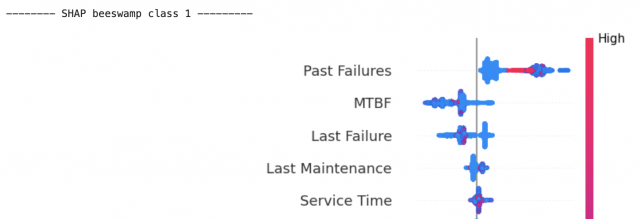Calem Blogs
Calem AI - Part 1: Predicting When Assets Will Fail
AI (artificial intelligence) brings exciting possibilities in enterprise asset management. For instance, it is possible to predict when assets will fail. Such a prediction may be based on learning from asset data in Calem including sensor readings, maintenance records, asset breakdowns, and asset attributes.
Asset data in Calem is collected, processed, and turned into training samples. The training samples are then fed into machine learning for asset failure prediction. A solid baseline model has been achieved to predict asset failures in Calem. Here is the model performance matrix.
Class 0 (No Failure in Horizon)- Precision = 0.81: About 81% of cases predicted as "no failure" are actually correct. Some false negatives (missed failures) remain.
- Recall = 0.92: The model successfully captures most of the "no failure" cases. It rarely misses them.
- Precision = 0.88: When the model predicts a failure, it's usually right (very few false alarms).
- Recall = 0.74: It misses about a quarter of true failures. This means some actual failures are not being predicted.
The model is conservative about predicting failures, so it's less likely to incorrectly flag "failure" when there isn't one.
A training sample consists of features based on data in Calem. Some features contributing more to failure prediction (class 1) than others. The model analysis shows the following top 5 features for failure prediction based on a training data set.
1. Application of Failure Prediction
One case the failure prediction may be used is maintenance planning. For instance, a planner is deciding if a PM work order may be released for a critical asset (of P1 priority). If the asset is going to fail in the near future (say within 30 days), the PM may be released to technicians right away. Otherwise, the PM may be hold for couple weeks when resources are available.
Other cases may be explored with the failure prediction. For instance, it might be used for proactive inspections to prevent unexpected failures of critical assets.
2. Asset Data for Model Training
Asset data in Calem is collected for model training. The data includes:
- Sensor readings and alerts. Sensors provide strong signals for model training. Sensor readings may be fed to Calem for analysis and inclusion in model training. Sensor alerts from meter triggers in Calem and external parties may be included in model training.
- Asset failures are recorded as work orders with category of "Corrective". These work orders may be included for model training.
- Preventive maintenance are performed as PM work orders in Calem. They may be included for model training. PM performance including asset condition and inspection results may be included for model training. See this blog for more info.
Additional Resources
- Calem AI - Part 2: Implementing Asset Failure Prediction (AFP)
- How to Setup Failure Tree for Troubleshooting
- Surfacing Step Conditions in Work Orders
- Asset Lifespan Alerts
- Asset Timeline View
- User Guide and Admin Guide (customer account required)
- Calem Enterprise Training Site
- Calem Enterprise Blogs
- Calem Enterprise demo
Related Posts
By accepting you will be accessing a service provided by a third-party external to https://www.calemeam.com/

